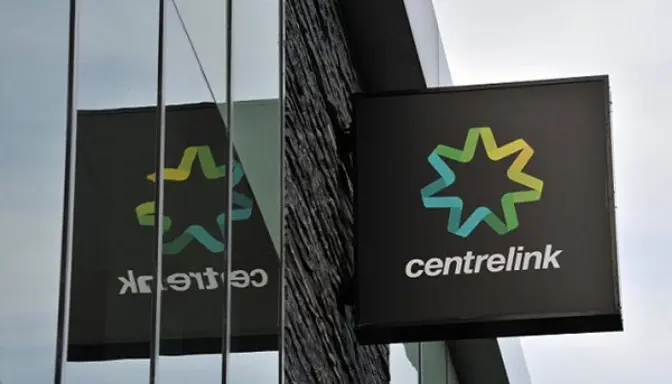Personal loans are offered by various lenders, such as banks, credit unions, online lenders, and peer-to-peer platforms. The interest rate, fees, and features of personal loans vary depending on the lender, the loan amount, the loan term, your credit score, and your income. Generally, personal loans have lower interest rates than credit cards, but higher interest rates than home loans.
Some lenders will accept Centrelink as a form of income, as long as it is not your only or main source of income. You will need to show that you have enough income from other sources, such as employment, investments, or rental income, to afford the loan repayments. You will also need to meet the lender’s other criteria, such as having a good credit history, being over 18 years old, and being an Australian citizen or permanent resident.
You can apply for a personal loan online, by phone, or in person, depending on the lender. You will need to provide your personal details, income details, expense details, and the purpose of the loan. The lender will check your credit report and verify your information. If you are approved, you will receive the loan either as a lump sum or in instalments, depending on the loan type.
A personal loan can be a good option for Centrelink recipients who need a larger loan for a longer term and have other sources of income and a good credit score. However, personal loans can be more difficult to get approved for and more expensive than other types of loans. You also need to compare different lenders and find the best deal for your needs and budget.
Factors to Consider When Getting a Loan on Centrelink
Before you apply for a loan on Centrelink, you should consider the following factors:
- The purpose of the loan. You should only borrow money for essential or urgent purposes, such as paying for medical bills, car repairs, or household items. You should avoid borrowing money for non-essential or discretionary purposes, such as going on a holiday, buying a new gadget, or gambling. Borrowing money for these purposes can lead to financial stress and debt problems.
- The amount of the loan. You should only borrow the amount that you need and can afford to repay. Borrowing more than you need can result in paying more interest and fees, and having a longer repayment period. Borrowing less than you need can result in not being able to cover your expenses, and having to borrow again or miss payments.
- The cost of the loan. You should compare the interest rate, fees, and charges of different loans and lenders. The interest rate is the percentage of the loan amount that you pay as interest over time. The fees and charges are the extra costs that you pay for the loan, such as application fees, establishment fees, monthly fees, late fees, and early repayment fees. The cost of the loan can affect how much you pay in total and how long it takes to repay the loan.
- The term of the loan. The term of the loan is the length of time that you have to repay the loan. The term of the loan can affect the size of your repayments and the cost of the loan. Generally, a shorter term means higher repayments but lower interest, while a longer term means lower repayments but higher interest. You should choose a term that suits your income and budget, and allows you to repay the loan as soon as possible.
- The features of the loan. You should also look at the features and benefits of different loans and lenders. Some features that may be useful for Centrelink recipients are flexible repayment options, such as weekly, fortnightly, or monthly repayments, or the ability to change the repayment amount or date. Other features that may be useful are extra repayments, redraw facility, or repayment holiday, which allow you to pay more, access extra funds, or take a break from repayments when you have extra money or face financial difficulties.
Alternatives to Getting a Loan on Centrelink
Getting a loan on Centrelink can be helpful in some situations, but it is not always the best option. There may be other alternatives that can help you with your financial needs, such as:
Government and community assistance
There are various government and community programs that can provide financial assistance to Centrelink recipients, such as concessions, rebates, subsidies, grants, vouchers, or hardship programs. These programs can help you with various expenses, such as energy, water, phone, internet, transport, education, health, or housing. You can check your eligibility and apply for these programs through Centrelink, Services Australia, or other agencies and organisations.
Financial counselling
If you are struggling with money or debt, you can get free and confidential financial counselling from a qualified and independent financial counsellor. A financial counsellor can help you with budgeting, managing your bills and debts, negotiating with your creditors, accessing financial assistance, and planning for the future. You can find a financial counsellor near you by calling the National Debt Helpline on 1800 007 007 or visiting the National Debt Helpline website.
Savings and budgeting
If you have some savings or income, you can use them to cover your expenses, such as paying for medical bills, car repairs, or household items. You can also try to save money by budgeting your income and expenses, cutting down on unnecessary spending, and finding ways to increase your income, such as selling unwanted items, doing odd jobs, or applying for a better-paying job.
Family and friends
If you have family or friends who are willing and able to help you, you can ask them for a loan or a gift. This can be a cheaper and easier way to get some extra money, as you may not have to pay interest or fees, and you may have more flexibility in repaying the loan. However, you should be careful not to damage your relationship with your family or friends by borrowing more than you can repay, or by not repaying the loan on time. You should also have a clear agreement on the terms and conditions of the loan, such as the amount, the repayment period, the interest rate, and the consequences of defaulting.
Conclusion
Getting a loan on Centrelink can be a viable option for some Centrelink recipients who need some extra money for essential or urgent purposes. However, not all loans are suitable or affordable for Centrelink recipients, and some loans may be more expensive or risky than others. Therefore, it is important to do your research and compare your options before you apply for a loan.






